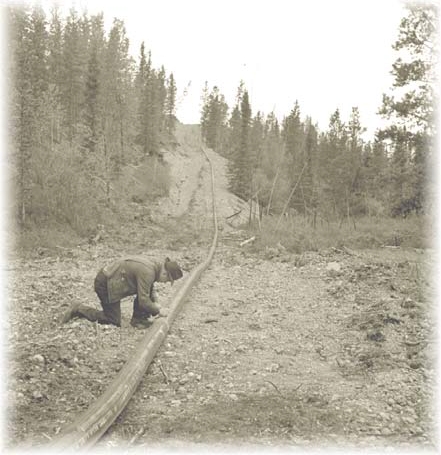The UNBC colloquium audience was treated to a fascinating history lesson last Friday, October the 5th. However Dr. Sinead Earley would cringe at this description. She presented her reflections on the history, impact, and current state of the Canol Pipeline. Her presentation certainly wasn’t in a history lesson format and the discussion that followed illuminated the concern that couching the presentation in those terms might elicit in someone aware of the importance of word choice.
I found the history of the Canol Pipeline to be very interesting and was all new information for me. Mixing current information and footage of the bike trip, with historic photos and video footage provided a very informative glimpse into the project. It is interesting that when a project of this large scale occurs in northern Canada, we hear very little of it throughout our education or in society in general. There is a lot to be learned from this pipeline in terms of the impacts of resource extraction and the long-term impacts of the highs and lows of the oil and gas industry.
As someone with a background in the natural sciences, I gained a number of glimpses into the world of a geographer during the talk. I was intrigued by the label of critical resource geographer. This was a new one for me. I also enjoyed the discussion of the concept of resources and noted the quote: “Resources are not; they become” from Erich Zimmerman. This certainly rang true. It also is relevant in the study of other resource extractive industries such as forestry. In the past, the primary resource seen in the forest was timber. However now managers might consider other ‘values’ (or resources) on the landscape as also important. i.e. water quality, fish, wildlife, visual quality. These have always existed – but they aren’t labelled as resources or considered as ‘values’ until we realize that we need them. This certainly leads to a multitude of other questions.
Another aspect of the Dr. Earley’s presentation style that I found intriguing was her introduction of the outline of the talk. She stated: “Here is how I want to take you through the content”. I found that a very eloquent was to introduce her outline.
I thoroughly enjoyed the question period. The discussion of the use of language and word choice I found particularly illuminating. I certainly notice the use of alarmist language around beetle ‘epidemics’ and wildfire discussions and will take care with word choice in my thesis work. I also hope to involve the local First Nations in my work and will consider her interactions with the Sahtu Dene. If I had an opportunity to ask a question, it would have been to ask her to expand upon the impacts to the Sahtu Dene of the building of the pipeline and the influx of the US Army.
Overall a very visually and intellectually stimulating colloquium and exploration of the past and present!


Recent Comments